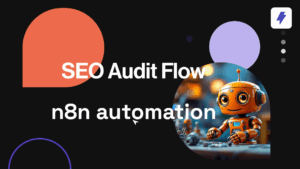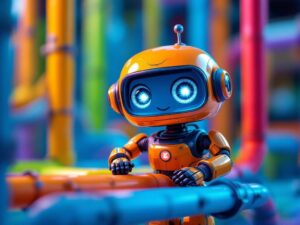Art has been a fundamental form of human expression for thousands of years. It has been used to communicate ideas, emotions, and beliefs. Art has also been a means of preserving cultural heritage and documenting historical events. In recent years, the world of art has been revolutionized by artificial intelligence (AI). AI is changing the way we think about art, challenging traditional notions of creativity, and redefining what it means to be an artist. In this blog, we will explore how AI art generators are redefining art.
Table of Contents
ToggleWhat are AI Art Generators?
AI art generators are algorithms that use machine learning to create original works of art. These algorithms are based on deep-learning neural networks that can learn patterns and generate art based on those patterns. AI tools like Dall-E 2 and OpenJourney have been trained on a vast array of images, including photographs, paintings, and sculptures. This has enabled them to generate unique and original works of art.
How AI Is Redefining Art
Generative AI is challenging traditional notions of art and creativity. Here are some of the ways they are redefining art:
1. Blurring the line between artist and machine
AI art generators have raised questions about what it means to be an artist. Traditionally, artists have been seen as individuals who possess unique talents and creative abilities. However, generative AI tools are challenging this notion by creating art that is indistinguishable from that produced by human artists. This blurs the line between artist and machine and raises questions about the role of humans in the creative process.
2. Creating art that is not bound by human limitations
AI art generators are not bound by the same limitations as human artists. They can create art that is beyond the scope of human imagination and can produce works that are impossible for humans to create. This has opened up new possibilities in the world of art, allowing artists to explore new ideas and concepts that were previously impossible.
3. Challenging the traditional art market
The art market has traditionally been dominated by a small number of established artists and galleries. However, AI art generators are challenging this status quo by creating a new market for digital art. This has opened up new opportunities for emerging artists who may not have been able to enter the traditional art market.
4. Fostering collaboration between humans and machines
AI art generators are not replacing human artists but rather are fostering collaboration between humans and machines. Human artists are using AI as a tool to create new works of art, and this has led to new forms of collaboration between artists and machines.
5. Creating art that is accessible to all
AI art generators are creating art that is accessible to all. Digital art can be reproduced and shared easily, and this has led to a democratization of art. People who may not have had access to art in the past can now experience and enjoy it.
The Future of AI Art Generators
The future of AI art is exciting and full of possibilities. As the technology continues to evolve, we can expect to see further advancements in the field. Here are some of the ways that AI art generators could impact the future of art:
1. New forms of art
AI art generators are already creating new forms of art, and we can expect to see more in the future. As AI algorithms become more sophisticated, they will be able to create art that is beyond the scope of human imagination. This could lead to new forms of art that we cannot even imagine yet.
2. Greater collaboration between humans and machines
As AI tools become more advanced, we can expect to see greater collaboration between humans and machines. Human artists will use AI as a tool to create new works of art, and this could lead to new forms of collaboration between artists and machines.
3. Changing the traditional art market
The emergence of a new market for digital art has already begun to challenge the traditional art market. In the future, we can expect to see more digital art being created, which could lead to a shift in the way art is bought and sold. It is also possible that we could see the emergence of new platforms for buying and selling digital art.
4. A new understanding of creativity
AI art generators are already challenging traditional notions of creativity, and this is likely to continue in the future. As we become more accustomed to working with machines, our understanding of what it means to be creative may evolve. We may come to see creativity as a collaborative process between humans and machines.
5. Ethical considerations
As AI art generators become more sophisticated, we may need to consider the ethical implications of creating art using machines. For example, if an AI art generator creates a work of art that infringes on someone else’s copyright, who is responsible? As with all new technologies, there will be ethical considerations to address as we continue to explore the potential of generative AI.
Conclusion
AI art generators are changing the way we think about art. They are challenging traditional notions of creativity, creating new forms of art, and opening up new opportunities for artists. While there are still many questions to be answered about the role of machines in the creative process, it is clear that AI art generators have the potential to redefine art in exciting ways. As technology continues to evolve, we can expect to see further advancements in the field, and it will be up to us to explore the possibilities and embrace the opportunities that AI art generators offer.
Are you ready to start creating art using generative AI? Sign up on Straico now and start using multiple AI models in one place.


